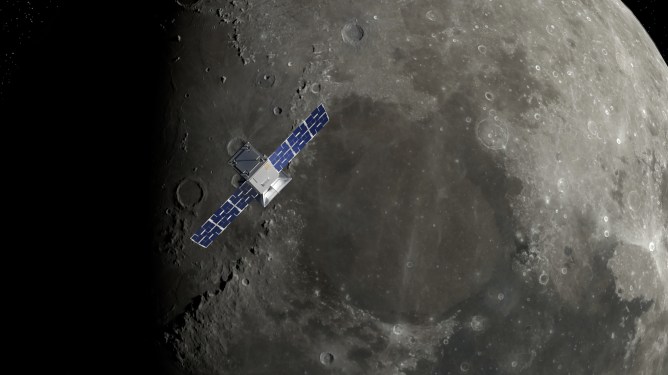A New Era for Space Exploration
After repeated delays, the microwave oven-sized CubeSat known as CAPSTONE is finally ready to begin its long journey to the moon. This mission marks the beginning of NASA’s ambitious Artemis program, which aims to establish a human presence on the lunar surface and pave the way for further space exploration.
The Artemis Program: A New Chapter in Space Exploration
NASA’s Artemis program is an ambitious initiative that seeks to return humans to the moon by 2024. The program’s ultimate goal is to establish a sustainable human presence on the lunar surface, with a view to using the moon as a stepping stone for further missions to Mars and beyond.
CAPSTONE: A Key Component of the Artemis Program
CAPSTONE (Cislunar Autonomous Positioning System Technology Operations and Navigation Experiment) is a CubeSat that will play a crucial role in the Artemis program. The satellite’s primary objective is to test a unique, highly elliptical orbit around the moon called a near-rectilinear halo orbit. This orbit has never been attempted before, and CAPSTONE’s mission will provide valuable data for NASA scientists.
The Journey Begins: Launching Aboard Rocket Lab’s Electron Rocket
CAPSTONE will launch aboard a Rocket Lab Electron rocket from the company’s site on New Zealand’s remote Māhia Peninsula. The Electron rocket is designed to carry small satellites into space, and this mission marks one of its most complex and ambitious flights yet.
A Record-Breaking Launch
According to Rocket Lab CEO Peter Beck, this launch will be ‘the highest mass and the highest performance Electron has ever had to fly by quite some margin.’ The company’s Photon spacecraft, which was developed specifically for this mission, will conduct a series of maneuvers to get CAPSTONE on the right trajectory to the moon.
Industry Partnerships: A Collaborative Effort
CAPSTONE is not just a NASA project; it’s also the result of major contributions from other industry players. Advanced Spacedeveloped owns and operates CAPS; Tyvak International built the CubeSat platform; Stellar Exploration provided the spacecraft’s propulsion system; and Tethers Unlimited provided the radio comms system.
A Flexible Launch Window
Originally, NASA was targeting Monday for the launch but had to push it back by one day to allow Rocket Lab to perform final systems checks. However, there’s no need to worry about further delays: Rocket Lab has launch opportunities every single day through July 27, and CAPSTONE’s trajectory is designed to arrive at the moon by November 13 regardless of when in the launch window it departs Earth.
Watching the Launch Live
NASA’s YouTube channel will be showing a live launch webcast starting from 5:00 AM EST, with the launch targeted for 5:55 AM EST. This is an exciting opportunity to witness history being made and to learn more about this groundbreaking mission.
The Significance of CAPSTONE
CAPSTONE marks the beginning of a new era in space exploration. By testing a unique orbit around the moon, NASA scientists will be able to gather valuable data that will inform future missions. The Artemis program is an ambitious initiative that aims to return humans to the moon and establish a sustainable human presence on the lunar surface.
Conclusion
The CAPSTONE mission is an exciting step towards establishing a lunar space station and paving the way for further space exploration. With its unique orbit and cutting-edge technology, this mission will provide valuable insights for NASA scientists and help lay the groundwork for future missions to Mars and beyond. As we watch CAPSTONE embark on its journey to the moon, we are reminded of the incredible progress that has been made in space exploration over the years.
Related Articles















